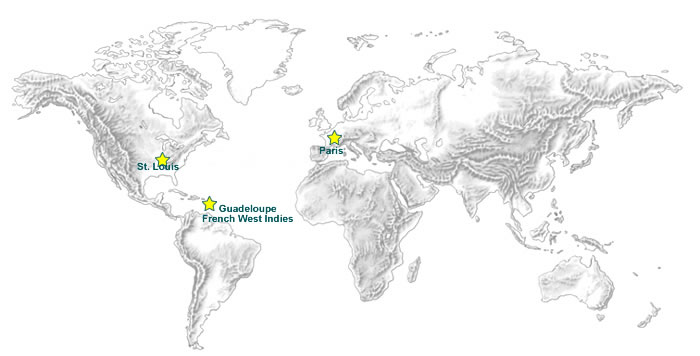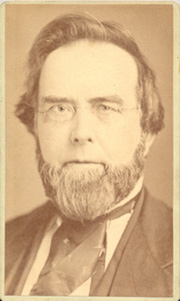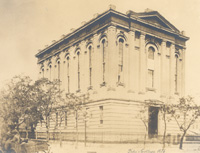Louis Charles Cherot Boislinière (1816-1896)
Louis Charles Cherot Boislinière was born September 2, 1816 on the French West Indian island of Guadeloupe, the son of a sugar plantation owner. In 1825 his father took him to France and entrusted him to private tutors in Paris. Boislinière then entered the Université de France (the national system of higher education instituted by Napoleon to supplant the medieval universities). He studied for a licentiate in law – the basic university degree, which in his case included scientific as well as legal training. He returned to Guadeloupe in 1839 when both his parents died. Not ready to continue in the path of his father, he organized a private research expedition through South America, the aim of which was to revisit biological and geological discoveries of the German scientist Alexander von Humboldt (1769-1859). When the expedition was over (no dates are provided in the sources, but it must have been about 1840), Boislinière resumed management of the plantation. Then once more he announced intentions to leave – his reasons at this point reflected growing unrest among the slaves of the island. Boislinière likely feared that an insurrection, as had already taken place on Guadeloupe and neighboring Martinique, would destroy the business and privileges of his family.
Boislinière settled for a short time in New Orleans in 1842 and made plans there to study medicine. Members of the French émigré community recommended that he choose the medical department of the University of Louisville and even provided a letter of recommendation to the renowned Kentucky senator Henry Clay (although such credentials were rarely necessary to enter medical schools in those days). While at Louisville, he studied under a surgeon who later would become one of the most prominent practitioners in the United States, Samuel D. Gross. But before finishing his degree, Boislinière decided to transfer to the medical department of St. Louis University. He was influenced in this decision by Henry M. Bullitt, a prominent Kentucky physician who was hired to lecture in pathology. Boislinière received his M.D. from St. Louis University in 1848.
Boislinière began his practice in St. Louis. Circumstances thrust the most arduous imaginable experiences for any doctor of the time on him and his colleagues the following year with a major outbreak of cholera. The profession did not yet understand the bacterial causes of the disease nor effective means of treatment – an estimated 4,317 died in the city in 1849. Boislinière became most absorbed in the plight of juvenile patients, many of who were orphaned by the epidemic. Through the medical faculty, he became acquainted with John Mullanphy, the prominent financier who had recently constructed a new building for the university medical faculty (and deeded it to his son-in-law, the dean, Charles A. Pope). Mullanphy’s daughter, Anne Biddle, agreed to finance St. Anne’s Infant Home under Boislinière’s medical direction and staffed by the Sisters of Charity, said to be the first maternity hospital for single women and orphaned children in the United States. (St. Anne’s opened in 1853 and operated until 1958, when it was converted into a skilled nursing facility.)
In 1855 the medical faculty severed ties to St. Louis University and were chartered an independent St. Louis Medical College. The college maintained its ties with the hospitals of the Sisters of Charity. In addition to his work at St. Anne’s, Boislinière was an attending obstetrician at the main Sister’s Hospital, which was then called simply St. Louis Hospital. In 1870 that moved to a larger new facility on the north side of the city thanks again to the Mullanphys (and it became known in time as Mullanphy Hospital. That same year Boislinière formally joined the faculty of his college and undertook direction of its new OB-GYN clinic.
Boislinière achieved international renown in his specialty. He was elected a member of the Anthropological Society of Paris in 1865. He was for several terms the president of the local Obstetrical and Gynecological Society in the 1870s and in that capacity hosted a meeting of the American Association of Obstetricians and Gynecologists in the city. He was regarded as the leading advocate of forceps delivery in regional medical schools and later introduced improved techniques for cesarean sections at hospitals under his charge.
Boislinière summed up the learning and experience of his long career in a monograph, Obstetric Accidents, Emergencies, and Operations, which was published in 1896, the year he died. He had continued to teach and see patients to the end of his life, witnessing also the affiliation of St. Louis Medical College with Washington University (1891). He was survived among others by his son, Louis Charles, Jr., who continued his father’s private practice in St. Louis into the 1930s.

Back to Biographies


